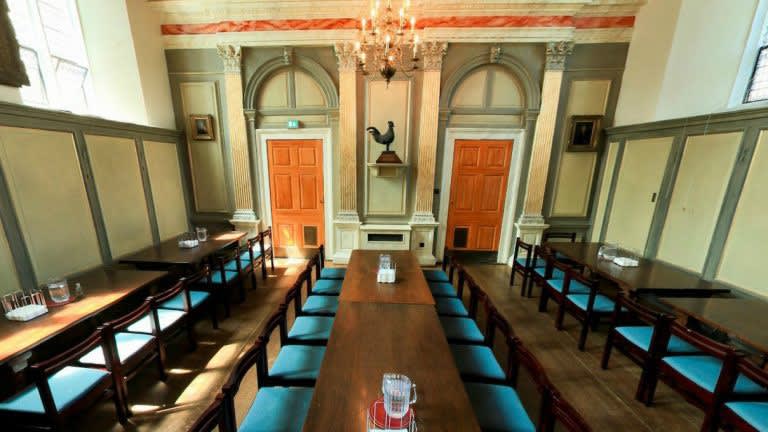
The story is already one year old, but I never got the opportunity to write about it. In March 2016, Cambridge University agreed to remove a bronze Benin Kingdom rooster that had been on display in the dining hall at Jesus College for more than half a century (as shown above). Yes you read that correct, a dining hall. Students had complained about its links to Britain’s colonial past and the sacking of Benin Kingdom’s capital in 1897. An integral part of being a student of course is protesting, but one can wonder why only now the rooster crowed.
A university spokesperson at the time said: “Jesus College acknowledges the contribution made by students in raising the important but complex question of the rightful location of its Benin Bronze, in response to which it has permanently removed the Okukor from its Hall.” Okukor was the rooster’s nickname; it was given to Jesus College by George Willan Neville (a member of the Benin punitive expedition) in 1930. It was adopted as a symbol because of the surname of its founder, John Alcock, a former Bishop of Ely. Three cockerels’ heads as well appear on the college’s crest. The spokesperson continued: “The College commits to work actively with the wider University and to commit resources to new initiatives with Nigerian heritage and museum authorities to discuss and determine the best future for the Okukor, including the question of repatriation.”
The campaign for the Okukor’s return produced a flurry of media attention in the British and international press; the BBC, The Guardian, The Telegraph, and even Artnet all reported on the story. It’s rare that African art make the headlines like that. John Picton, an authority on the art of Nigeria, reacted in Newsweek on the question of the return of the looted Benin Kingdom treasures: “There is of course a strong moral case for the return of this material—all of it—but to be honest there is currently nowhere safe to put it in Nigeria. The existing facilities could not cope if all the artifacts from museums in LA, Chicago, New York, London, Berlin, St. Petersburg, and so on were to arrive. In any case, it is only right that world-class museums of world art history and archaeology should include some of this material; so there is a place for compromise. The trouble is no-one really wants to do anything about it; and if a group of students make a fuss and this brass bird is wrapped up and sent back, so what? The problem is much more complex.” Hear, hear.

One year later the rooster is still crowing for attention and in April 2017, Prince Gregory Akenzua of Benin renewed calls for Jesus College to return it to Nigeria during a visit to Cambridge University (info). But, for the moment, the Okukor remains in storage and Jesus College have not yet made any indication as to whether it will be returned to Nigeria.
ps This cock definitely displays the obsession with pattern and the technical expertise in lost-wax casting that typifies the great works made by brass-casters at the Benin Kingdom court. Only about two dozen of them are known (one of them being in the Lagos Museum by the way). It should be noted that none of the articles on this cock speak of its function, so here is what the MET says about theirs:
Brass roosters are placed on ancestral altars commemorating the queen mothers of Benin. They stand for fowl and other animals that are sacrificed during rituals honoring royal ancestors. These explicitly male creatures acknowledge that the queen mother is different from other women and shares many powers and privileges with men. In depicting these birds, Benin brass casters indulge their love of dense overall patterns. Although stylized, these incised designs deftly suggest the rooster’s showy plumage, scaly legs, and dimpled comb.
You can learn more about them in the freely available pdf of Kate Ezra’s book on the Perls Collection of Benin Art at the Metropolitan Art here (pp. 85-89).
Wishing you all a joyful Easter !
